Abstract
For the selection of a suitable antigen concentration for use in routine complement-fixation tests with Q-fever antisera, a rigid system of antigen units is unsatisfactory. The optimum antigen dilution should be judged after inspection of the results of full “chess-board” titrations with a variety of antisera. Non-specific reactions may occur with sera from patients with primary atypical pneumonia or sera which have deteriorated during storage. These may be detected with a typhus antigen or some similar control antigen.
Nine Mile and Henzerling strain antigens, which are widely used for routine diagnosis, were compared in tests with 868 sheep sera, 1055 human blood-donor sera, 66 human convalescent sera, and 20 guinea-pig sera. Considerable discrepancies were found in the results obtained with the two antigens.
Irrespective of antigen concentration, the Nine Mile strain was more sensitive than the Henzerling strain for the detection of Q-fever antibody in human and guinea-pig sera and in some sera from Welsh sheep. With antibody in Kentish sheep sera, on the other hand, the Henzerling antigen was markedly more sensitive than the Nine Mile strain antigen. It is concluded that these two strains cannot be regarded as interchangeable, and the choice of antigen must depend on the geographical area and the species to be tested.
Full text
PDF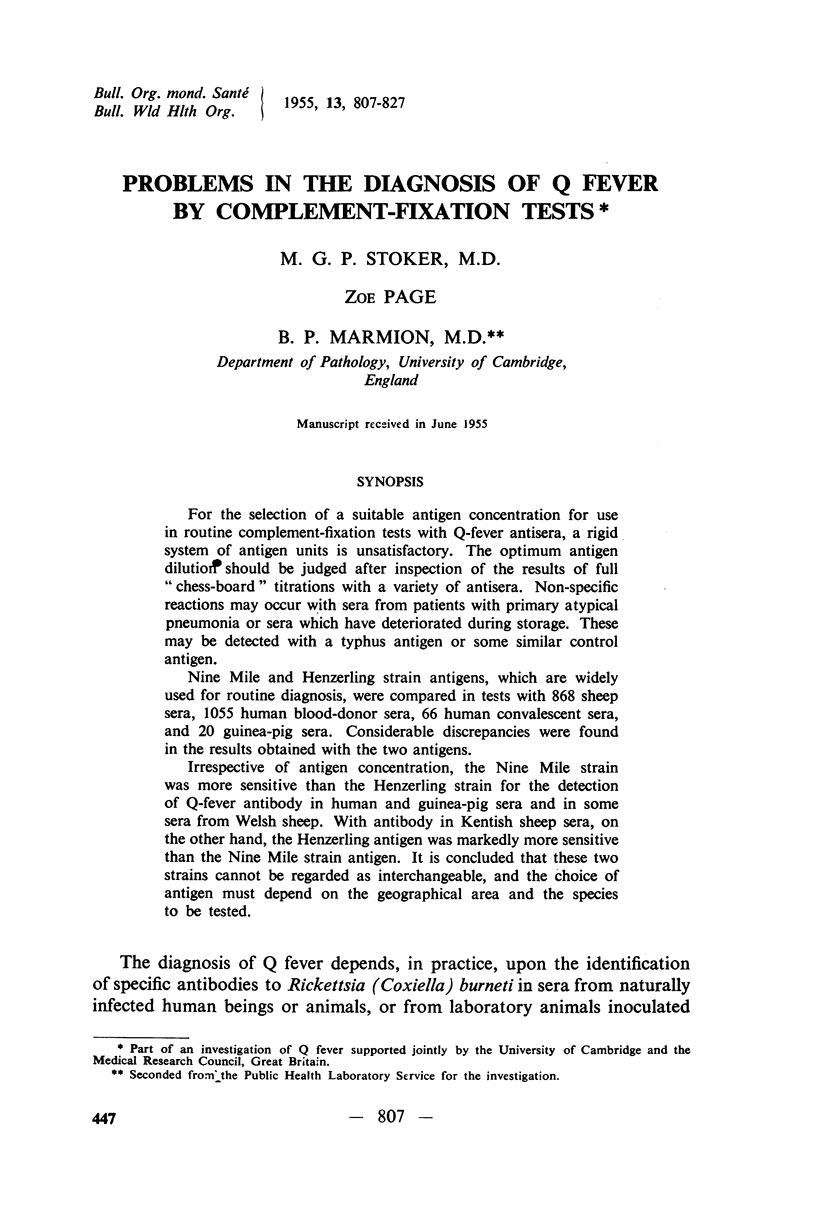
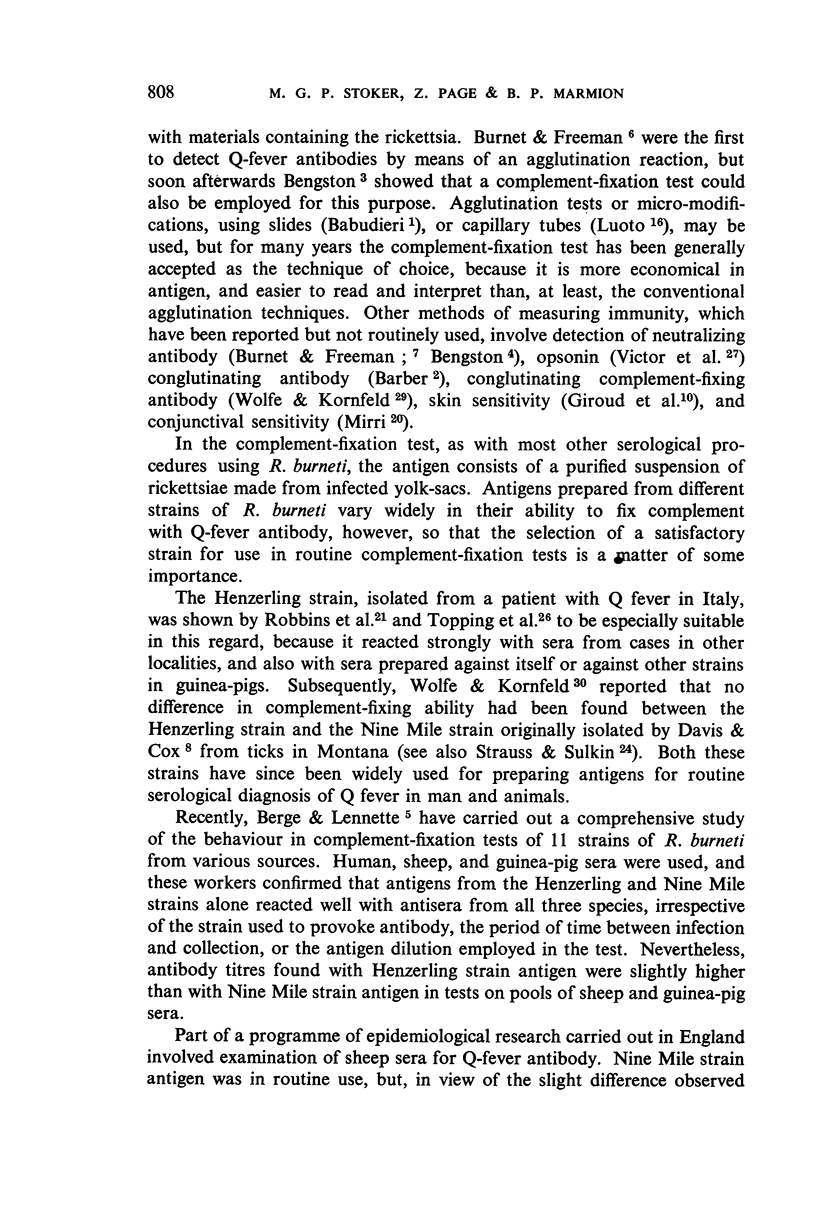
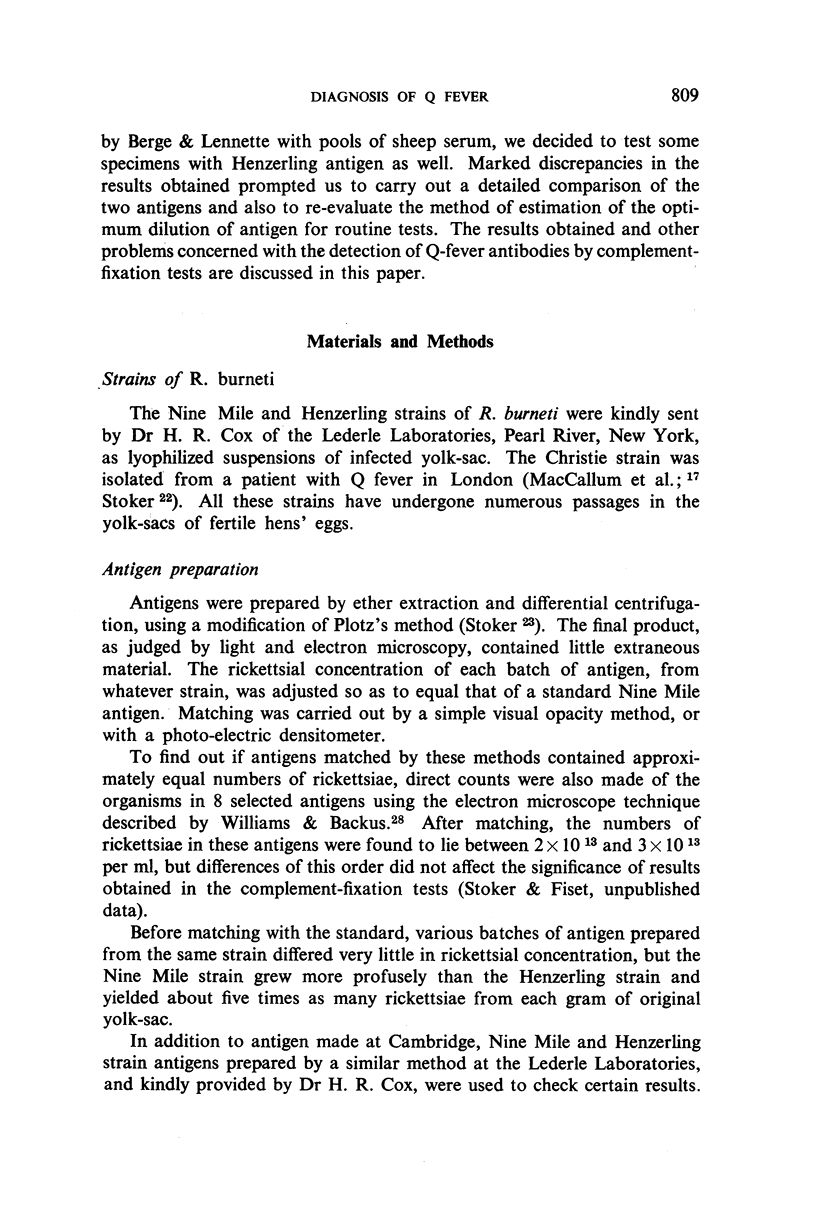
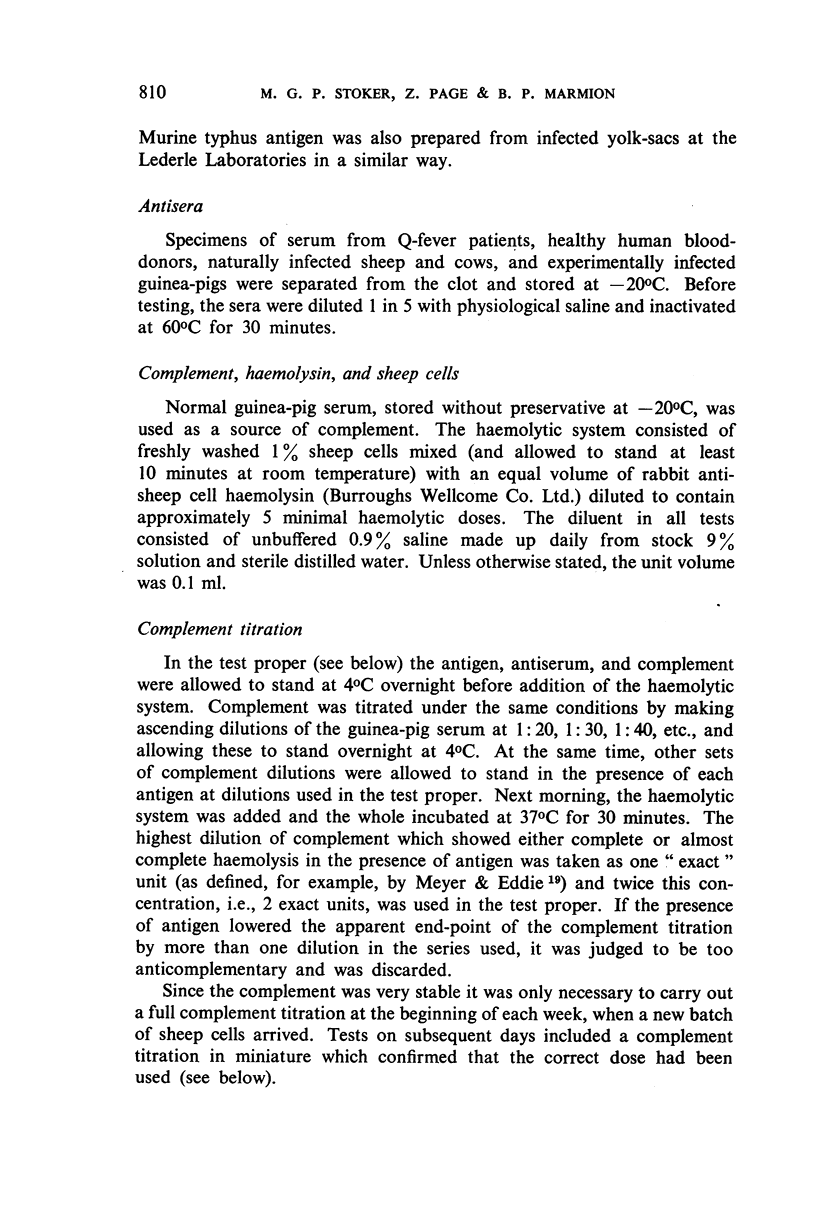
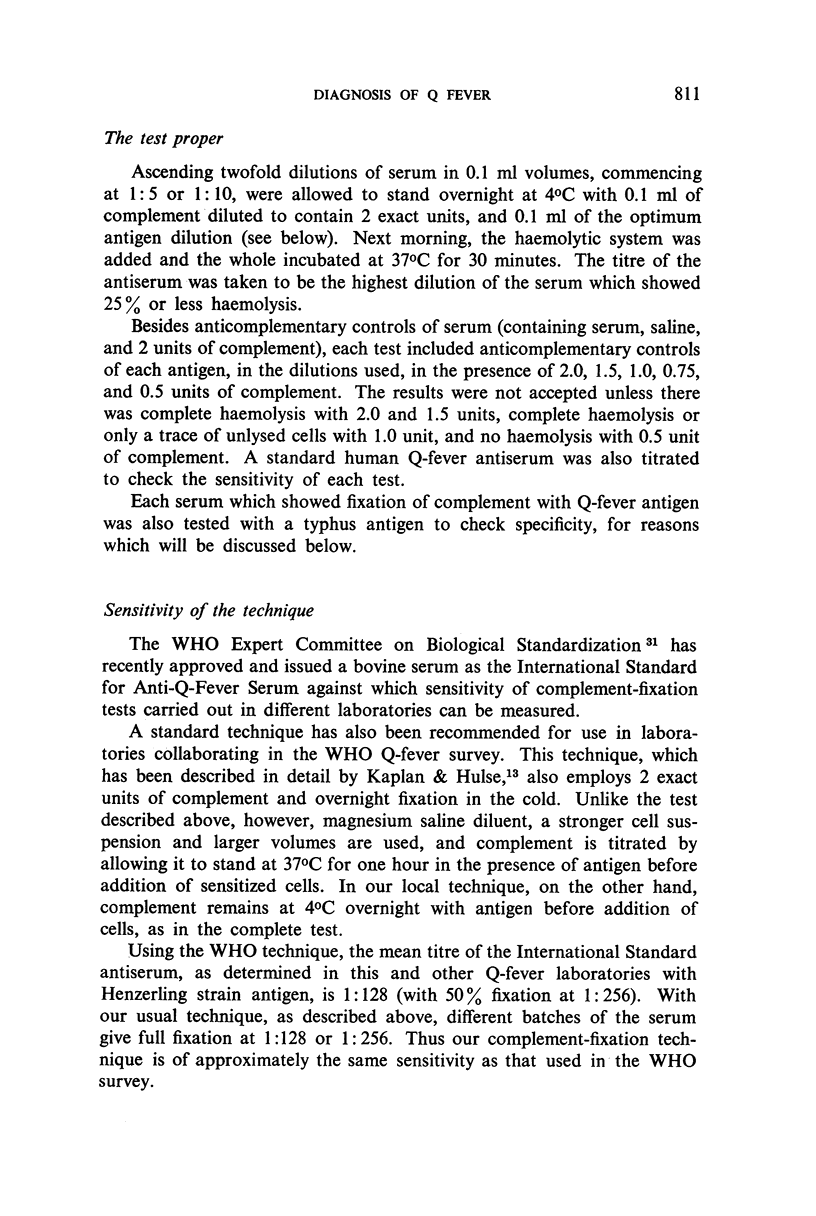
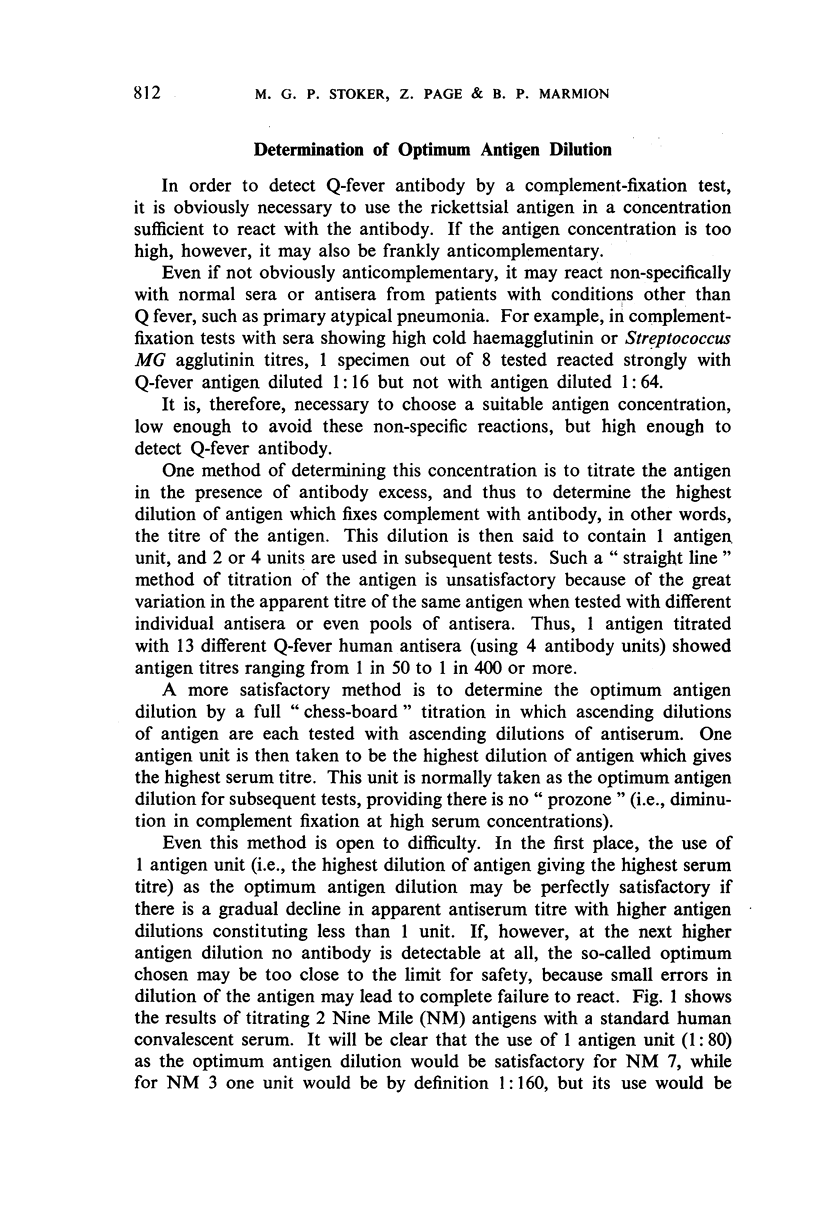
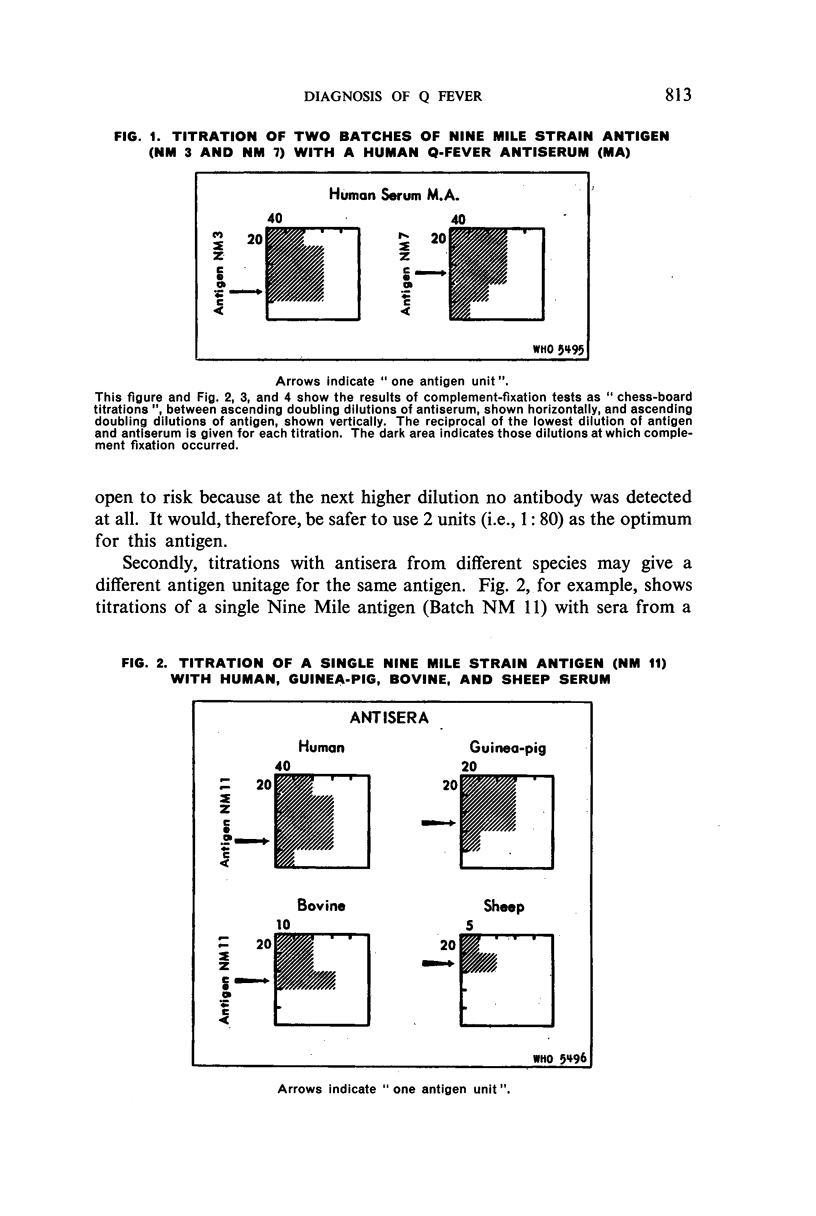
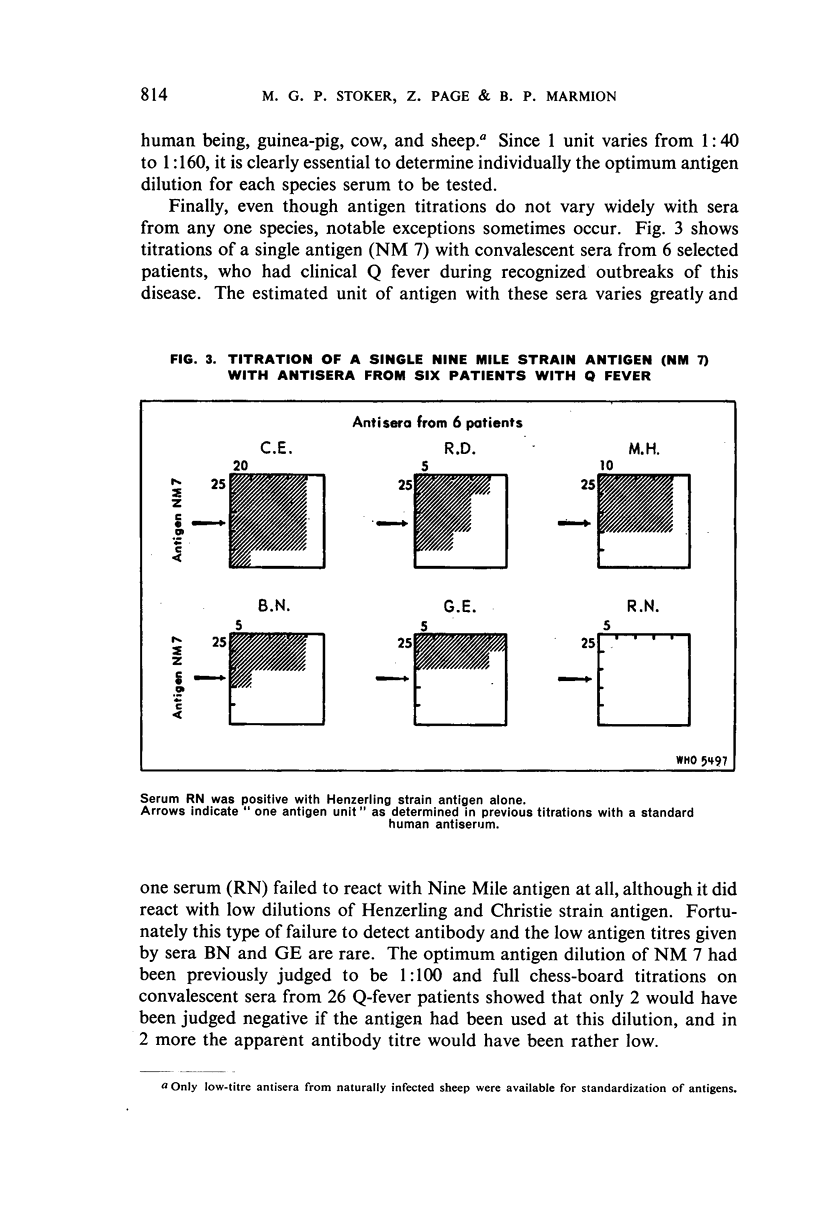
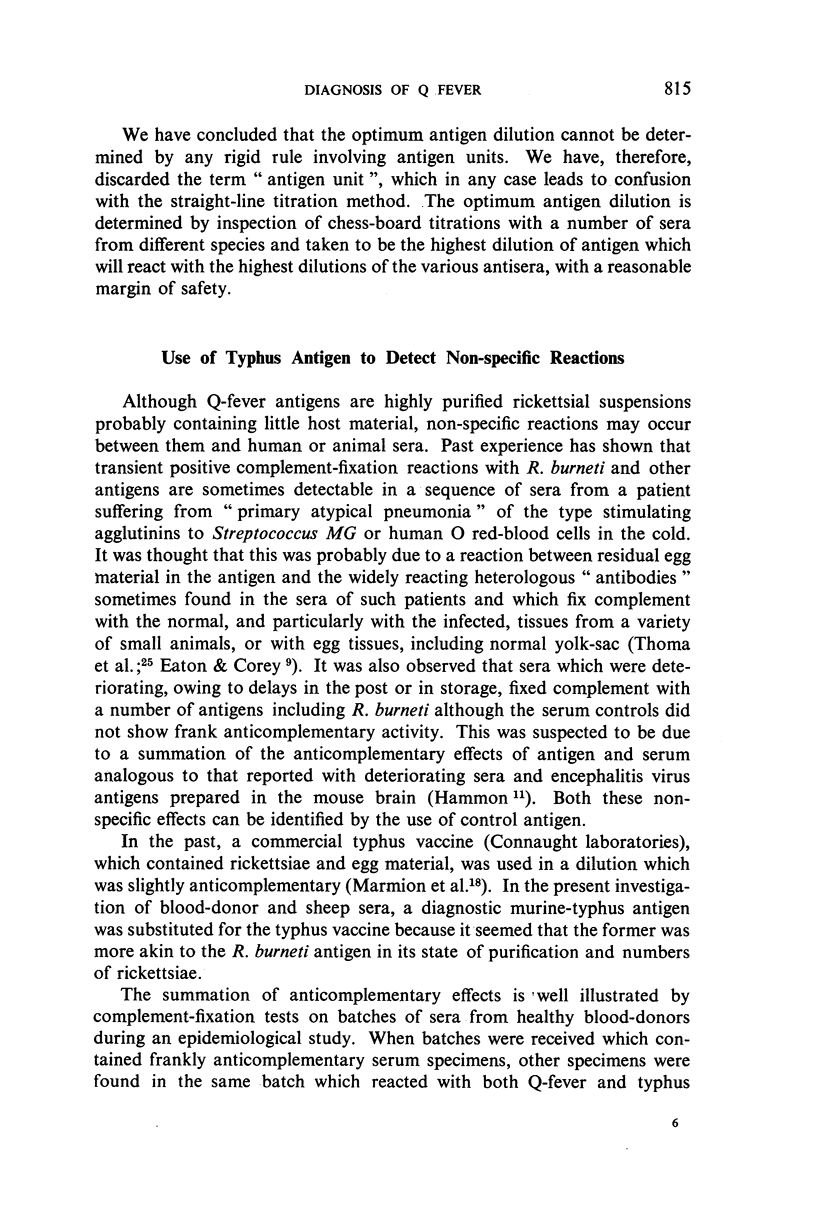
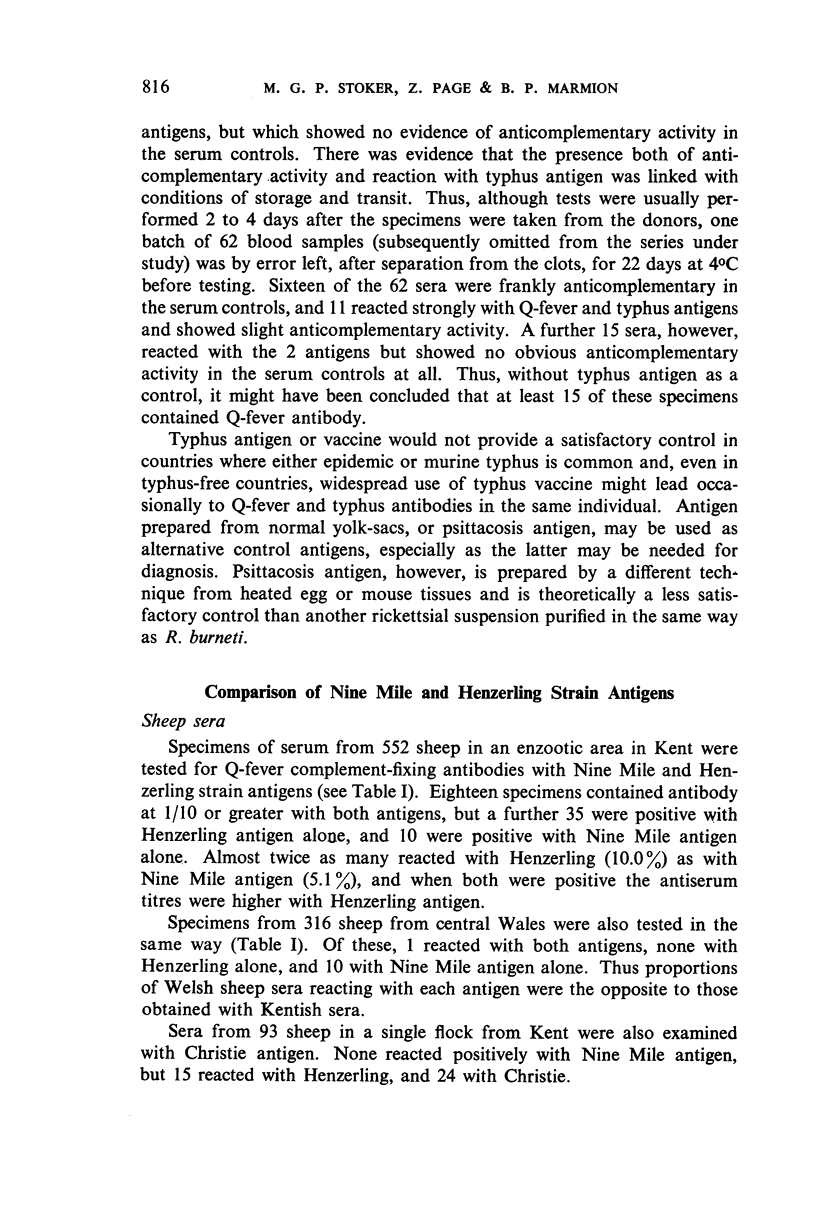
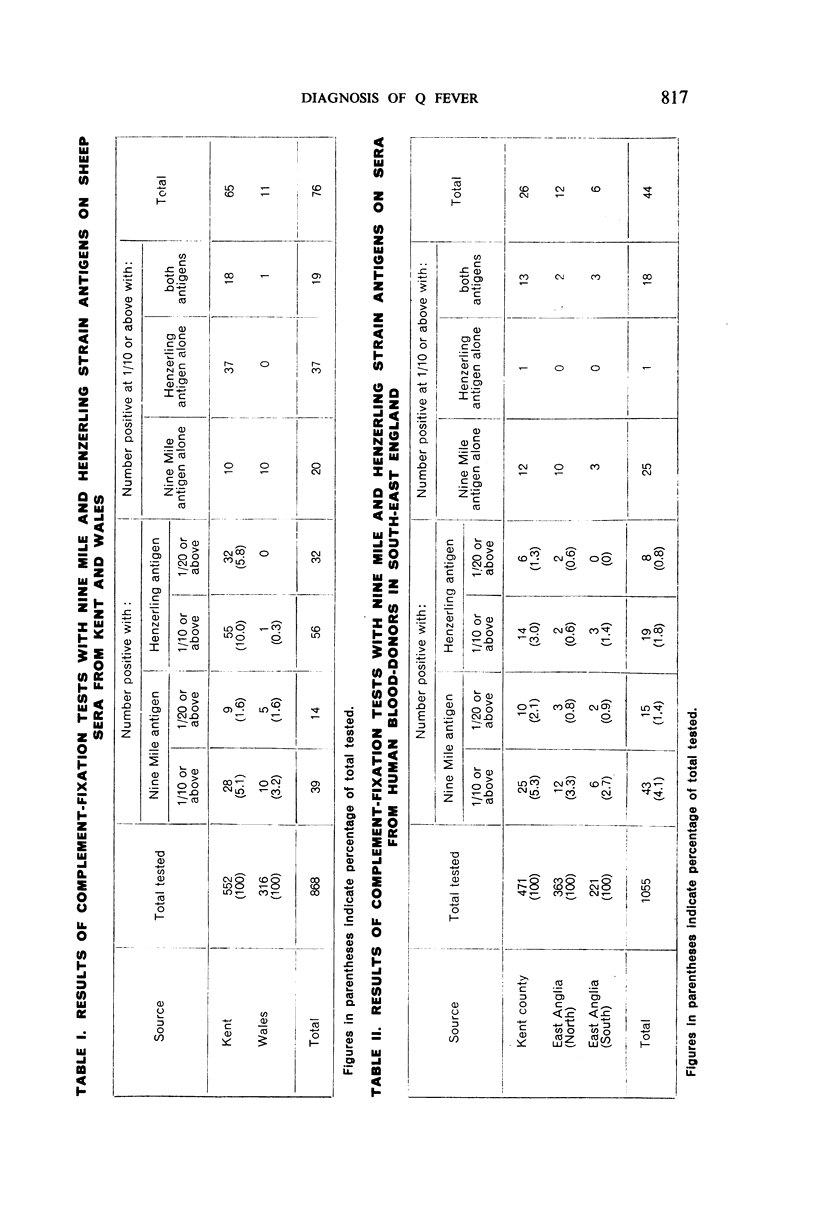
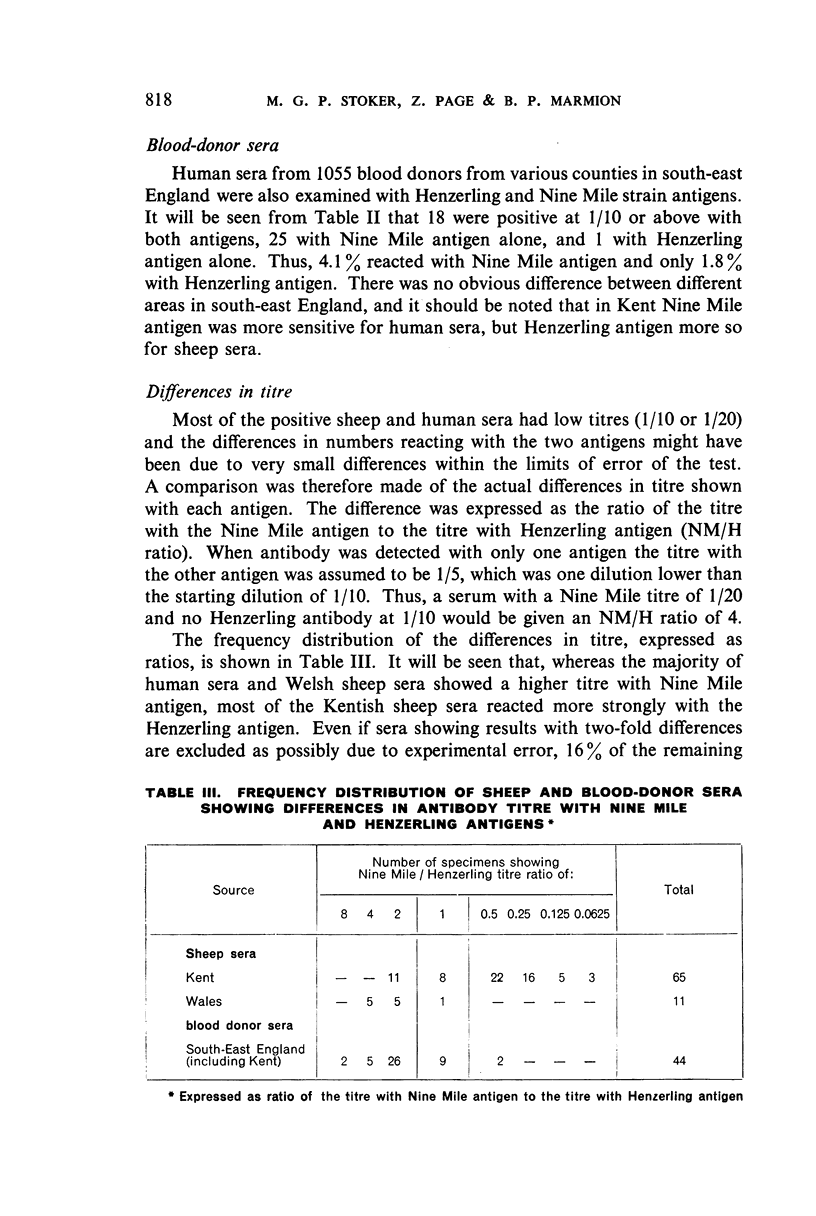
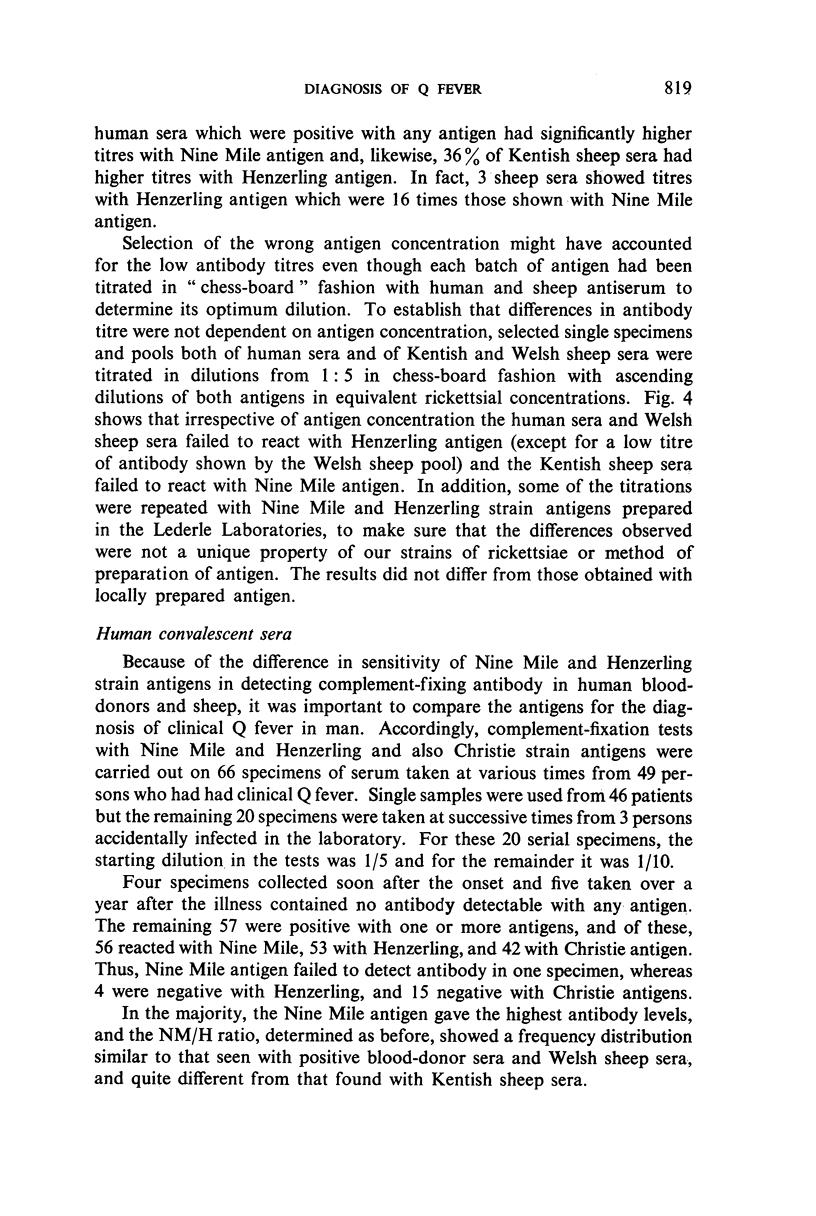
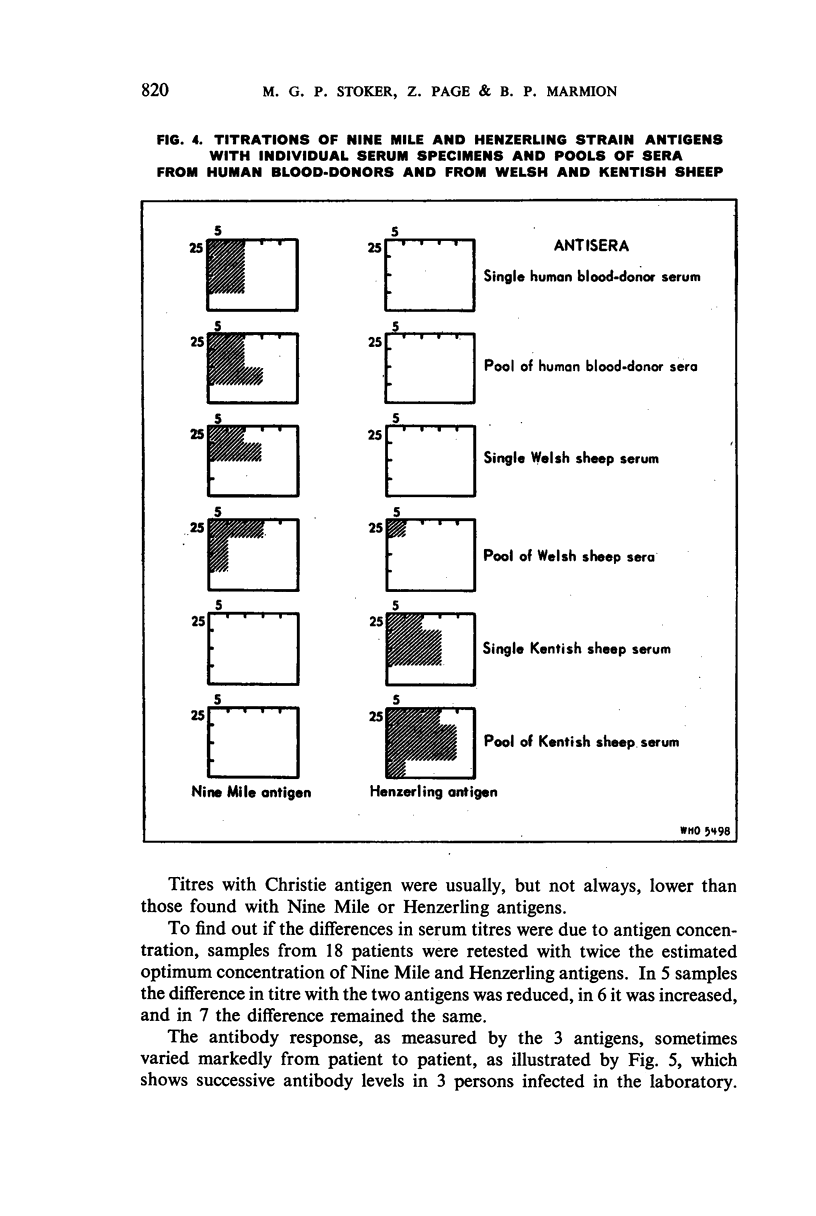
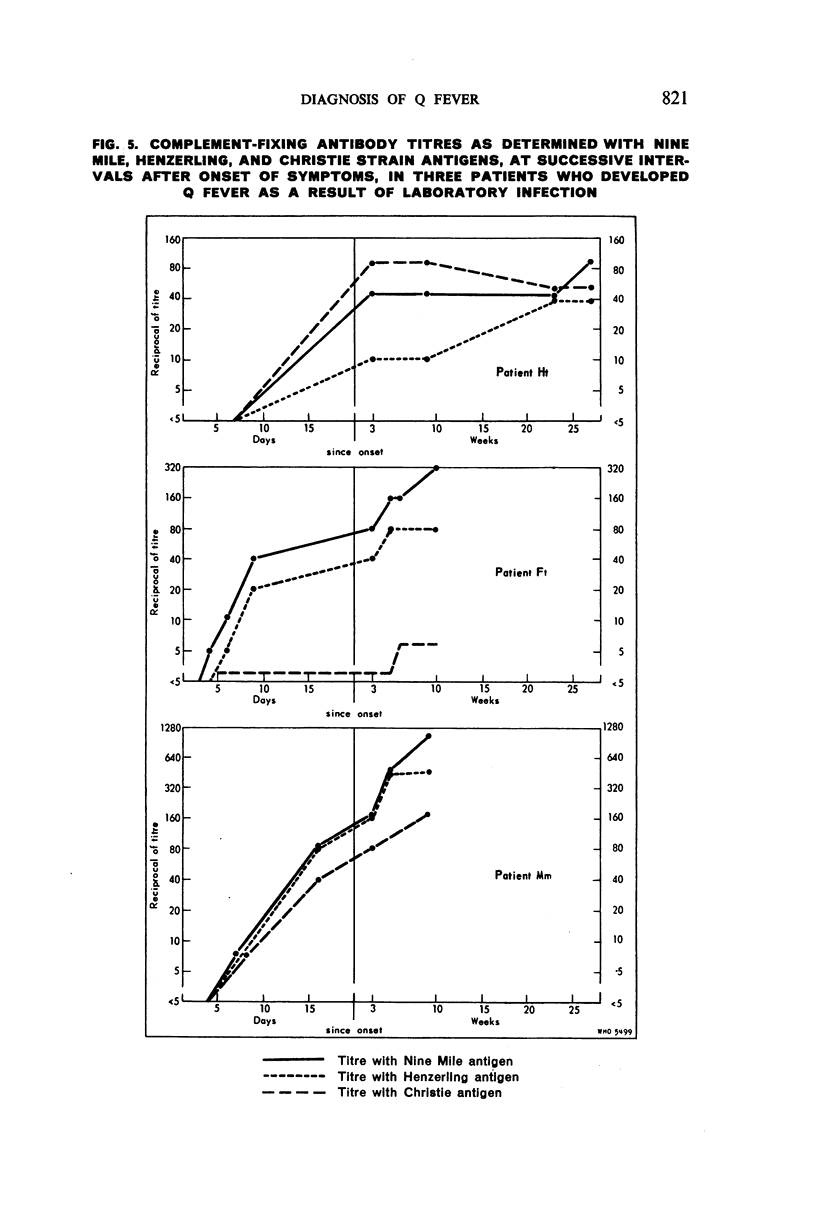
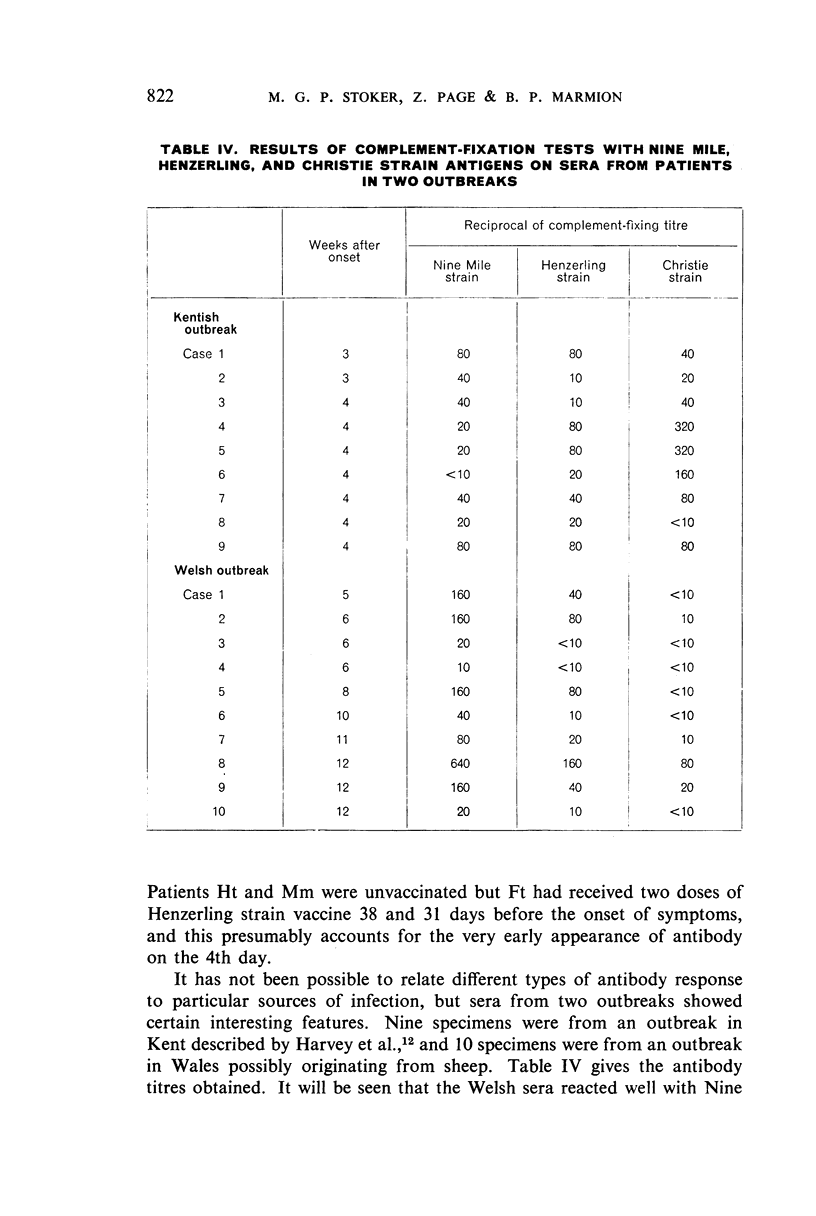
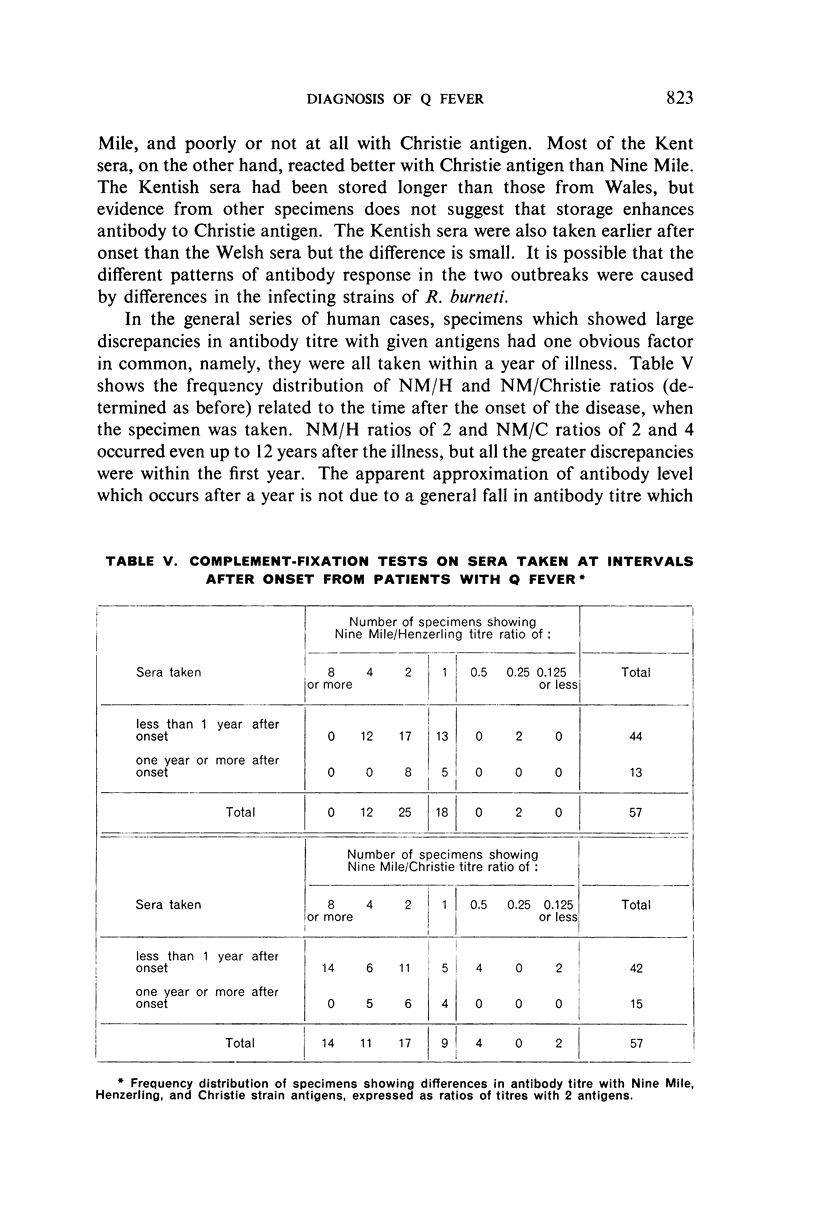
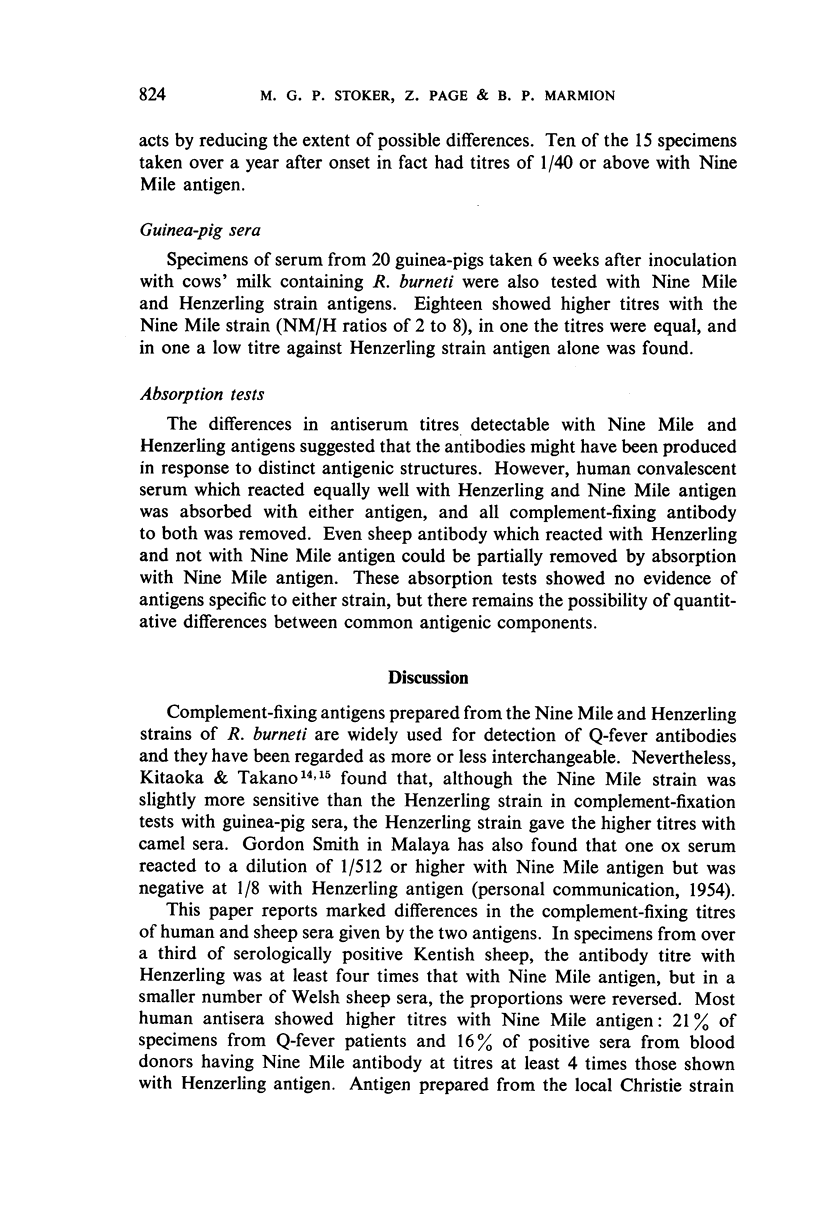
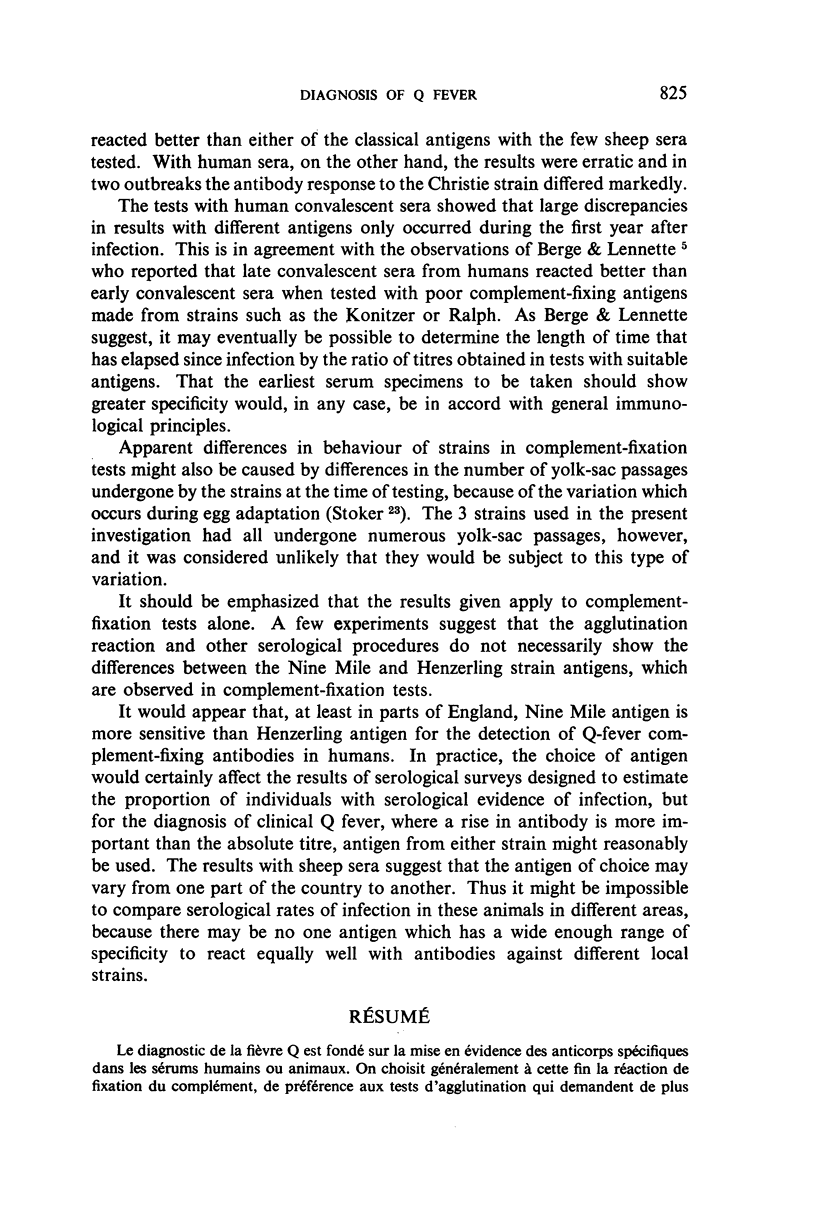
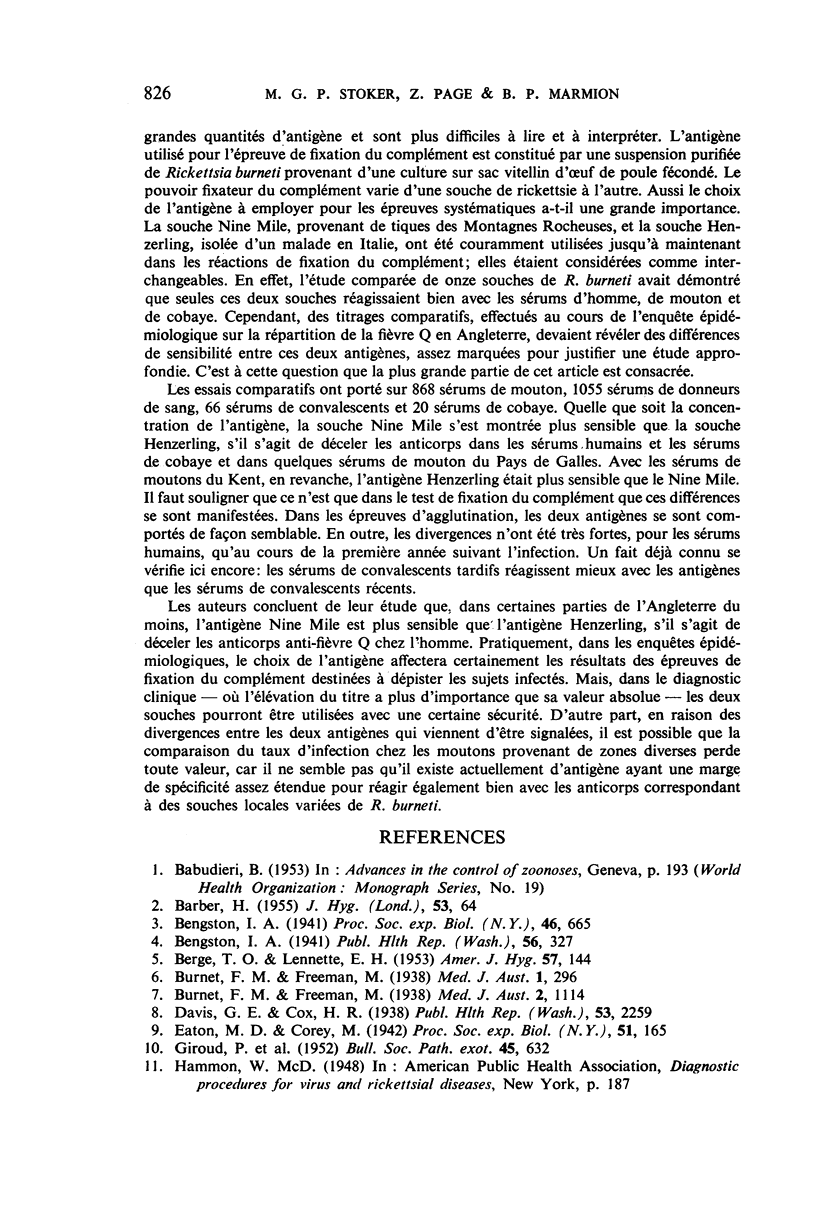
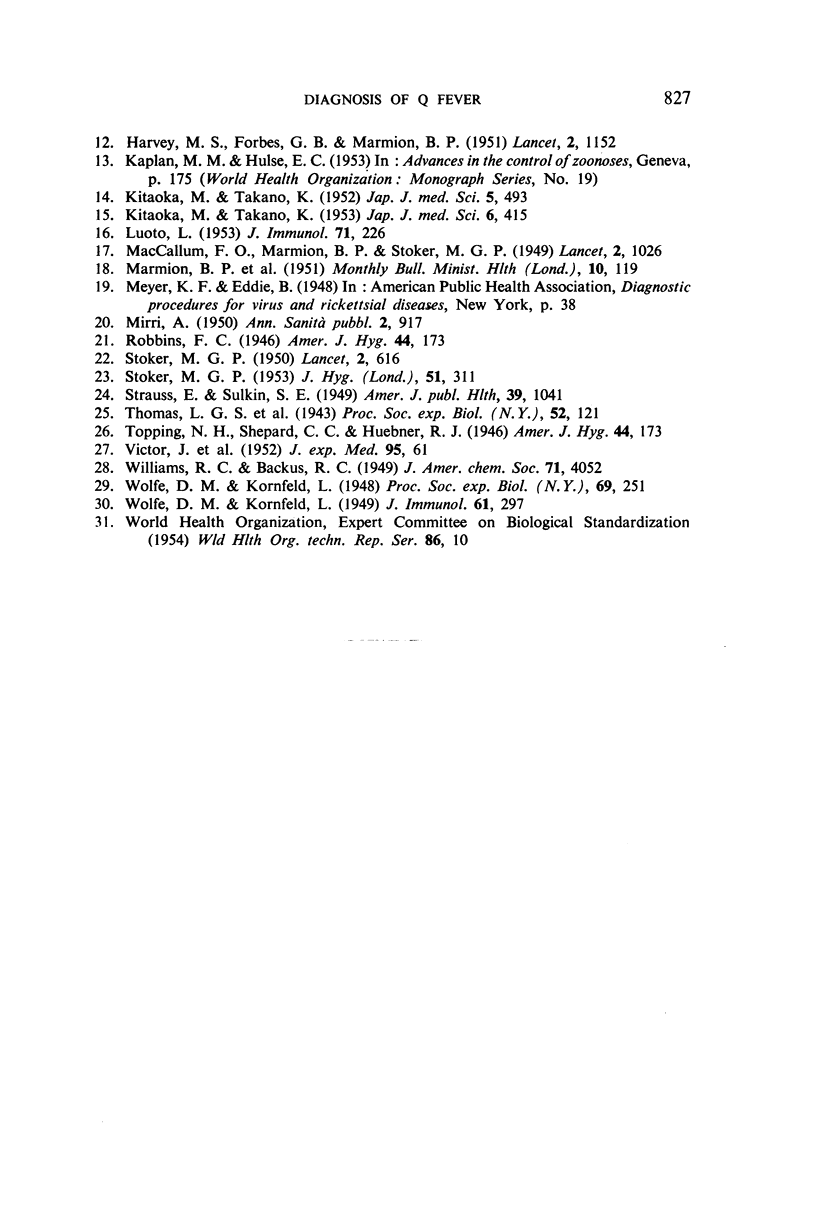
Selected References
These references are in PubMed. This may not be the complete list of references from this article.
- BERGE T. O., LENNETTE E. H. Q fever; a study of serological relationship among strains of Coxiella burnetii (Derrick). Am J Hyg. 1953 Mar;57(2):144–169. doi: 10.1093/oxfordjournals.aje.a119566. [DOI] [PubMed] [Google Scholar]
- GIROUD P., LE GAC P., JADIN J., GAILLARD J. A. Les tests cutanés dans l'etude des cinq rickettsioses majeures: typhus épidémique, typhus murin, fièvres du groupe boutonneuxpourpré, fièvre Q, fièvres du groupe oriental. Bull Soc Pathol Exot Filiales. 1952;45(5):632–645. [PubMed] [Google Scholar]
- HARVEY M. S., FORBES G. B., MARMION B. P. An outbreak of Q fever in East Kent. Lancet. 1951 Dec 22;2(6695):1152–1157. doi: 10.1016/s0140-6736(51)93157-1. [DOI] [PubMed] [Google Scholar]
- KITAOKA M., TAKANO K. Complement fixation in Q fever. I. Comparative evaluation of several technics. Jpn J Med Sci Biol. 1952 Dec;5(6):493–500. doi: 10.7883/yoken1952.5.493. [DOI] [PubMed] [Google Scholar]
- LUOTO L. A capillary agglutination test for bovine Q fever. J Immunol. 1953 Oct;71(4):226–231. [PubMed] [Google Scholar]
- MARMION B. P., ROWLANDS A., MacCALLUM F. O., THIEL C. C., McDONALD J. R., PHIPPS P. H. The effect of pasteurization on milk containing Rickettsia burneti. Mon Bull Minist Health Public Health Lab Serv. 1951 May;10:119–128. [PubMed] [Google Scholar]
- MARMION B. P., STOKER M. G. P. Q fever in Great Britain. Epidemiology of an outbreak. Lancet. 1950 Nov 25;2(6639):611–616. doi: 10.1016/s0140-6736(50)91582-0. [DOI] [PubMed] [Google Scholar]
- MIRRI A. La "febbre Q" negli animali in Sicilia e diagnosi allergica della "febbre Q" negli animali. Ann Sanita Pubblica. 1950 May-Jun;11(3):917–926. [PubMed] [Google Scholar]
- MacCALLUM F. O., MARMION B. P., STOKER M. G. P. Q fever in Great Britain; isolation of Rickettsia burneti from an indigenous case. Lancet. 1949 Dec 3;2(6588):1026–1026. doi: 10.1016/s0140-6736(49)91599-8. [DOI] [PubMed] [Google Scholar]
- STOKER M. G. Variation in complement-fixing activity of Rickettsia burneti during egg adaptation. J Hyg (Lond) 1953 Sep;51(3):311–321. doi: 10.1017/s0022172400015746. [DOI] [PMC free article] [PubMed] [Google Scholar]
- STRAUSS E., SULKIN S. E. Q fever; a note clarifying the identity of American strains of Coxiella burnetii. Am J Public Health Nations Health. 1949 Aug;39(8):1041–1041. doi: 10.2105/ajph.39.8.1041. [DOI] [PMC free article] [PubMed] [Google Scholar]
- TAKANO K., KITAOKA M. Complement fixation in Q fever. II. Preparation of antigen and its antigenicity. Jpn J Med Sci Biol. 1953 Aug;6(4):415–424. doi: 10.7883/yoken1952.6.415. [DOI] [PubMed] [Google Scholar]
- VICTOR J., RAYMOND R., VALLIANT J., WAGNER J. C., POLLACK A. D. Studies on opsonins in Q fever. J Exp Med. 1952 Jan;95(1):61–70. doi: 10.1084/jem.95.1.61. [DOI] [PMC free article] [PubMed] [Google Scholar]
- WOLFE D. M., KORNFELD L. Conglutinating complement absorption test compared with hemolytic complement-fixation reactions using Q fever immune bovine serum. Proc Soc Exp Biol Med. 1948 Nov;69(2):251–255. doi: 10.3181/00379727-69-16681. [DOI] [PubMed] [Google Scholar]
- WOLFE D. M., KORNFELD L. The application of a quantitative complement-fixation method to a study of Q fever strain differentiation. J Immunol. 1949 Apr;61(4):297–306. [PubMed] [Google Scholar]


